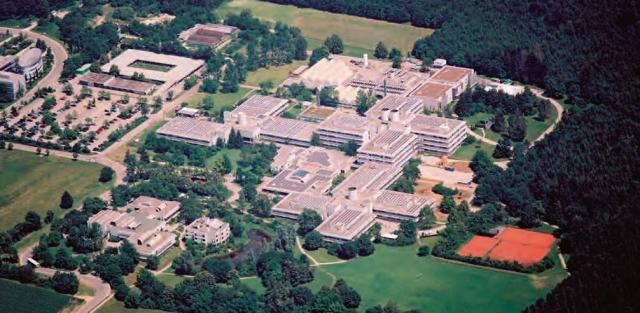Effective calcium protection for a recognized research institute
Effective calcium protection for a recognized research institute
When a doctor tells a patient that "your arteries are calcified", he or she means that deposits have built up in the patient's arteries and are interfering with blood circulation. The sanitation system at the Max Planck Institute for Biochemistry in Munich suffered from the same problem for several years - and the "symptoms" got worse and worse: calcification of the plate heat exchangers was detected, which had serious consequences. This was even though the "patient", i.e. the institute, had received rejuvenating treatment shortly beforehand.
The Max Planck Institute's extensive building complex houses the scientific facilities, administration and management, a library - and even a kindergarten... The buildings date from the 1970s, which can be seen in the hot water tanks with pipework. the hot water tanks with tube heat exchangers that they had been in use for many years. As part of the modernization of the sanitary facilities, they were replaced with modern hot water modules.
Extremely high demands on the hot water supply
An institute where around 850 employees carry out cell research, among other things, places extremely high demands on sanitary technology: The strict hygiene requirements for the hot water system had to be met and the risk of legionella from the central drinking water heating system had to be minimized. At the same time, no disinfection chemicals were to be used in the long pipe network.
Therefore, the institute decided in favor of a system that effectively kills the legionella bacteria that enter the hot water installation from the cold-water network via thermal disinfection. Initially, the positive effect failed to materialize; on the contrary, the old limescale deposits led to a noticeable drop in the performance of the plate heat exchangers. A specialized company needed to clean the heat exchangers before the positive effect could take effect.

Over time, several BIOCAT systems have been added
To maintain the proper functioning and efficiency of the disinfection system, the institute decided to use BIOCAT limescale protection systems from WATERCryst. "The water hardness in the area is around 18° dH", explains Alexander Piesche, head of the lime protection project for the Max Planck Institute at WATERCryst. "This is why the heat exchangers were able to scale so quickly because the water in the area is highly calcifying." After the cleaning work, a BIOCAT KS 11000 limescale protection system was installed in the building most affected by the limescale.
"The KS limescale protection system is installed directly in the cold-water inlet of the water heater," explains Piesche. In addition, the disinfection systems in other buildings were upgraded with BiOCAT units. "It only took the technician one working day per unit to install a BIOCAT unit," says Piesche.
The systems have been in operation since 2008 and have proven effective in protecting against limescale and loss of performance. Due to the positive experience, more BIOCAT systems have been installed at the institute over the years - including a KS 8000 system in one of the building blocks and another KS 11000 system to supplement the BIOCAT systems already installed.
BIOCAT KS 11000

Dim. with a capacity of 11,000 l/day
